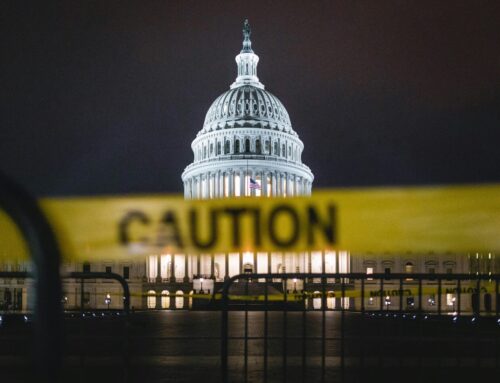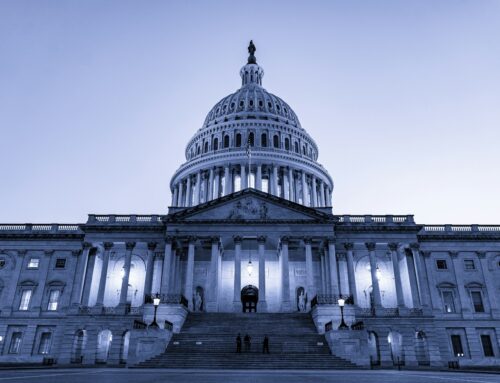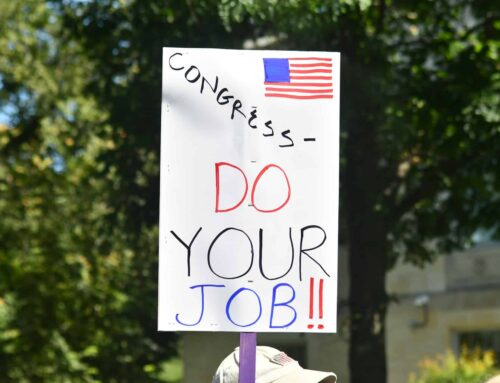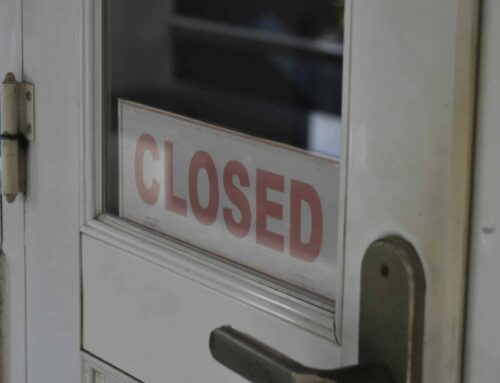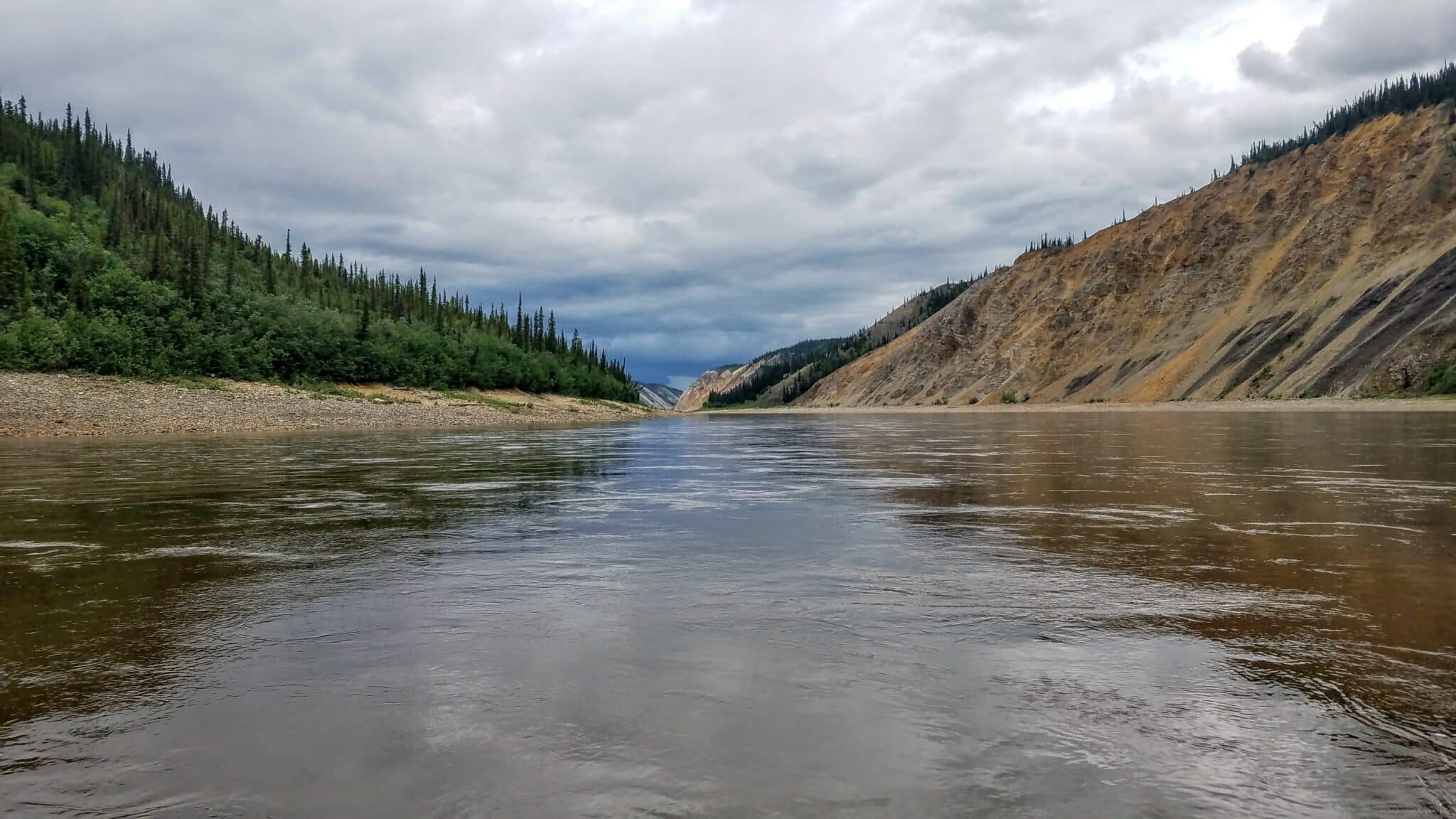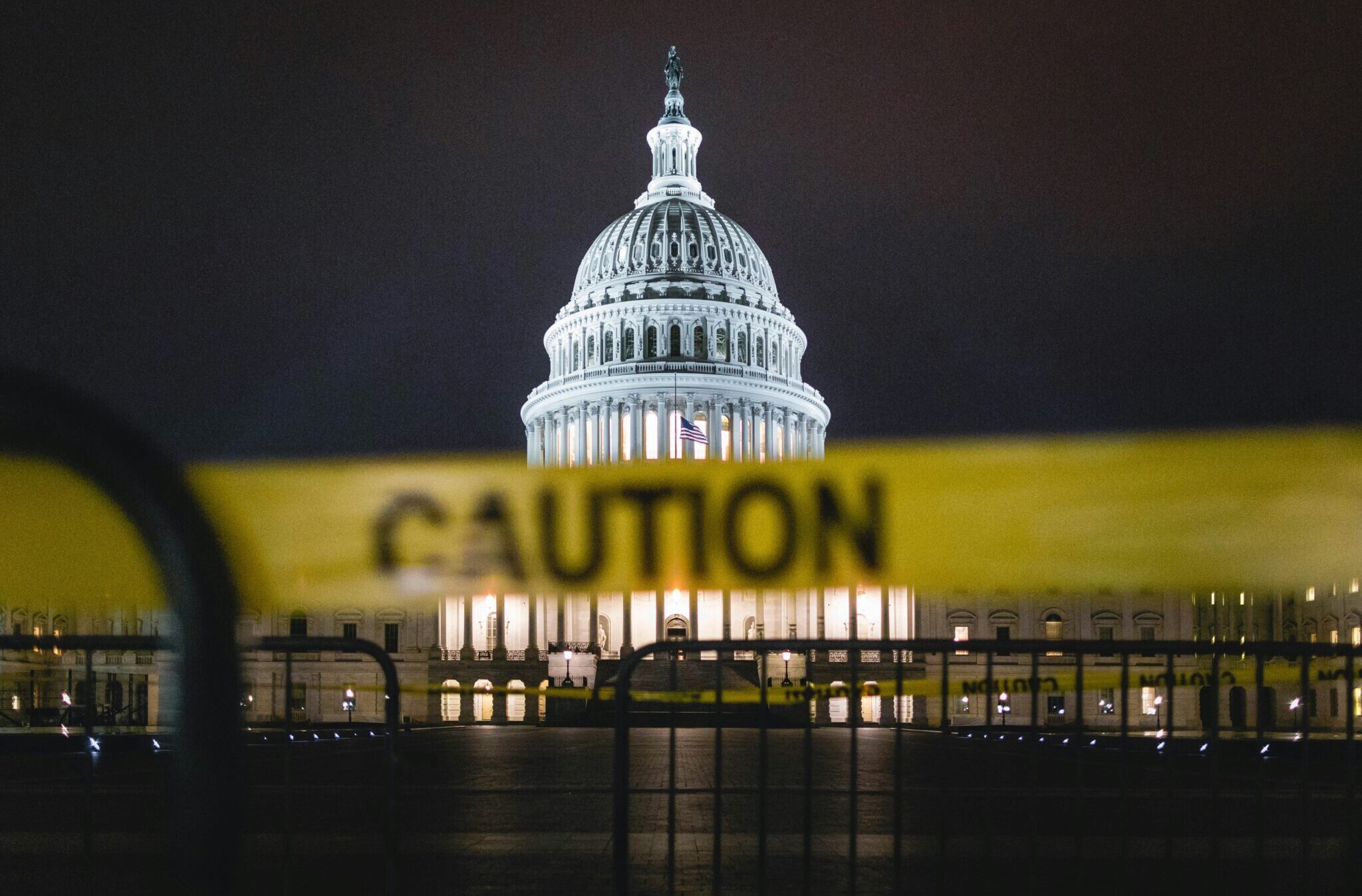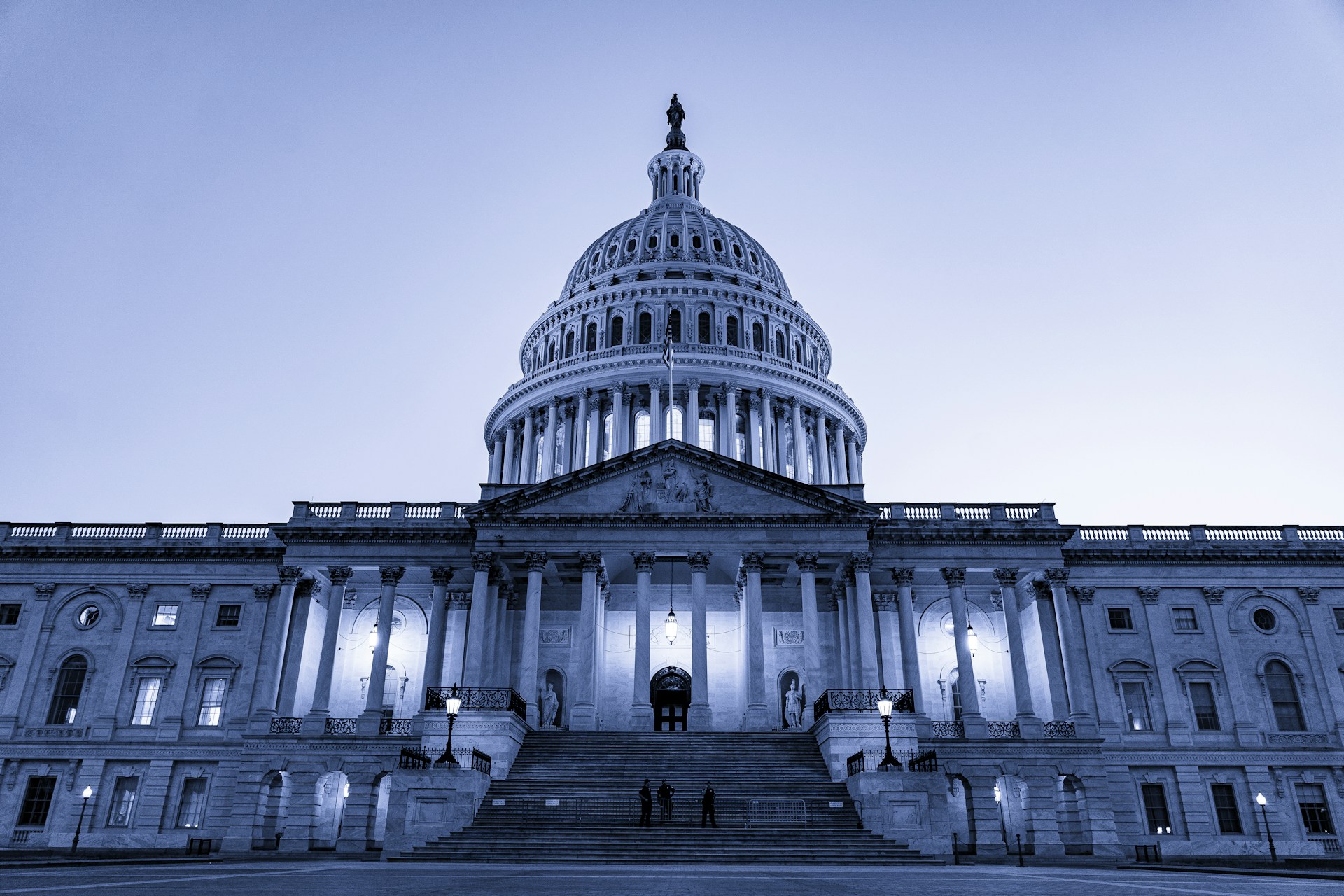When a wasteful government program like the Yazoo Area Pump Project is killed, it oughta stay dead. But the US Army Corps of Engineers has this pet zombie hidden in the Mississippi backwater. Listen to find out how taxpayers could be on the hook for billions in an attempt to unnecessarily re-plumb the Mississippi River and its tributaries. An environmental and fiscal disaster that benefits only a handful of farmers who are growing subsidized commodities in the floodplain.
Transcript
Announcer:
Welcome to Budget Watchdog All Federal, the podcast dedicated to making sense of the budget spending and tax issues facing the nation. Cut through the partisan rhetoric and talking points for the facts about what’s being talked about, bandied about and pushed to Washington, brought to you by taxpayers for common sense. And now the host of Budget Watchdog AF TCS President Steve Ellis.
Steve Ellis:
Welcome to All American Taxpayers Seeking Common Sense. You’ve made it to the right place for 30 years. TCS that’s taxpayers for common sense, has served as an independent nonpartisan budget watchdog group based in Washington DC We believe in fiscal policy for America that is based on facts. We believe in transparency and accountability because no matter where you are in the political spectrum, no one wants to see their tax dollars wasted today. Dear Podcast listeners, we are once again face-to-face with one of our founding principles here at Taxpayers for common sense. Once a wasteful government program is killed, it ought to stay dead. And to do that, we’ve learned over the decades that you have to kill, kill till it’s dead. Dead, dead. Well, thanks to the Army Corps of Engineers, we have a backwater zombie to dispatch all over again. Joining me now to shine the spotlight and help us take aim is TCS Director of Research and Policy, Mr. Josh Sewell.
Josh Sewell:
Hey, thanks Steve. Happy to be here and happy to not talk just about the farm. Bill, let’s get to this budget boogeyman.
Steve Ellis:
Alright, Josh, give us the mission briefing on the Yazoo backwater pumps,
Josh Sewell:
The Yazoo backwater pumps. This is a fiscally irresponsible boondoggle that would be built by the Army Corps of Engineers in northwest Mississippi, the Yazoo River, and a few tributaries that go into it, meet the Mississippi River, and especially at times of flooding or when the Mississippi is high, the water will back up into this area and it serves as a natural floodplain for this major river system that drains much of northern Mississippi. So a lot of wetlands and a small area that flooded consistently year after year, sometimes more, sometimes sometimes less, but is a naturally occurring low lined area that is a natural flood control area.
Steve Ellis:
I assume then when you say we have pump assembly there, so the idea is then they’re going to pump the water out of this area or to prevent it from backing up and pump it into the already high floodwaters of the Mississippi, right?
Josh Sewell:
Yeah, so if you know much about floodplains, they’re also great places to farm. And so we have historically done a lot of projects to reduce flooding in places that frequently flooded because if you flooded for hundreds of years, you have great rich farmland. And so this is one of the many areas along the Mississippi River and frankly one of the last place that doesn’t have a massive completed flood control project to basically prevent flooding all the time. Much of the Mississippi floodplain does have that, and it’s going to take a significant event to flood areas. And so what the actuals that Yazoo Pump project would be is the Corps of Engineers is proposing a 25,000 cubic feet per second pumping plant to basically take some water out of this area, dump it into the downstream and get it back into the Mississippi. And so the idea is to reduce some of the flooding, not eliminate, but to reduce the flood levels in this area at certain times. But I say massive, we’re talking bigger than anything the core has ever built, also bigger than any other pumping plant in the world.
Steve Ellis:
And how much is this going to cost Josh? And who’s putting the tab?
Josh Sewell:
Good question. It’s a hundred percent federally funded. The core of engineers has not produced an updated economic and benefit analysis, so they’re not telling us, but we can make a guess. And basically looking at other projects and when this project was proposed decades ago originally, and we had an actual economic analysis, and we’re talking probably somewhere around $1.9 billion
Steve Ellis:
And who’s going to benefit from it?
Josh Sewell:
Not a hundred percent federal, that’s for sure. So basically, this is really a flood control project for farming and for a small number of farmers. I don’t have the exact number, but we did some analysis in the past and the farmland in this area is like in many other places, consolidated amongst a small number of folks. And so disproportionate benefits are going to go towards agriculture with minimal benefits to a couple of small communities that are there. But in reality, that’s pretty much smoke and mirrors. It’s just for farming.
Steve Ellis:
So you mentioned how so much of the Mississippi has been closed off the backwater areas, the floodplain, and this is an area where they were talking about doing this for 50 years or since the 1950s, so even longer than that. But didn’t this get stopped once before Josh?
Josh Sewell:
Yeah, it was stopped in 2008. The George W. Bush administration actually vetoed this project and said, you cannot do this using what’s known as a Clean Water Act veto. And so it’s a fairly rare use. It’s an exercise where the EPA can say, no, this construction project is so bad, it would destroy so many wetlands that you cannot do this. We’re not going to let it go forward. And that’s what they did. And George W. Bush administration wasn’t known as the most environmentally friendly administration yet even they said, this is so destructive, talking 80, maybe 90,000 wetlands, 80 to 90,000 acres of wetlands is what it looks like would be destroyed by this or massively harmed that. They said, you can’t do this.
Steve Ellis:
So it is a big environmental disaster, 90,000 acres of wetlands. It is a fiscal disaster where it’s going to cost upwards of more than a billion dollars, almost 2 billion to build. And it benefits a handful of farmers that are growing subsidized commodities in the floodplain. So it’s like a lose, lose lose for the taxpayer and it’s been killed and the core is resuscitating it.
Josh Sewell:
Yeah, exactly. And it doesn’t make sense why they’re doing it. It’s a great question. But I think it’s mostly because again, those concentrated benefits, the people who could benefit from this would benefit substantially. And most of them don’t live in the backwater. We’re talking absentee landowners who live upstream somewhere else that aren’t actually directly affected by this, but their economic interests are. And so when it’s free money from the government, it’s a hundred percent, again, a hundred percent. So it doesn’t matter what it costs, those people benefited from it will not have to pay any cost share for it. So it’s in their interest to keep pushing and pushing. And it just gets into this weird political environment. And it doesn’t make any sense why any administration, let alone the current one, which claims to be more environmentally friendly, and the few people who do live in the backwater who could benefit from a different project from some smaller scale locally implemented projects are disproportionately African American and economically disadvantaged. So it just doesn’t make sense on any level, at least for people out in the real world.
Steve Ellis:
So back in the early or mid two thousands, the Washington Post reported that a core official had called projects like this swine, and I think he got it right and thankfully the George W. Bush administration and vetoed it. And now here it is during the Biden administration, it’s bringing, potentially bringing it back, just amazing. And so we are going to be doing our best to stop this project. So while I got you on the pod, Josh, and we’re talking Corps of Engineers, one of our favorite agencies, what else is going on with the Corps these days?
Josh Sewell:
Well, there’s a couple new, well, I call them new, but one of ’em is something that’s been happening forever, but there’s a new iteration of it going on with the corps. So every couple years, the House I Senate try to pass something called the Water Resources Development Act word A, because that’s easier to say. And that is where Congress would set priorities for the Army Corps of Engineers, primarily both authorizing projects, changing some of the rules around projects, and also doing other things that are often not helpful, but at least have an opportunity to actually fix some of the mistakes of the past. So there’s two big things. The first thing we should talk about is there’s a push in the Senate to actually further bail out the barge industry from its responsibility to pay for the projects that actually make safe, reliable, consistent commercial navigation possible.
Steve Ellis:
And so what’s the change there?
Josh Sewell:
So the change here is that currently if you want to build a lock and dam, so as everyone probably knows, a dam is something that stops water in a river to create a reservoir. A lock is basically the door that lets you get around that dam. So all the construction for this navigation infrastructure in this country used to be shared 50 50. We pay 50% of the costs. The barge users, the owners, the people who use that river pay 50% of the cost through a fuel tax. Well, that was changed to 65, 35 2 years ago. And now the navigation industry is saying, well, we still have to pay something, so we don’t like that. So we actually want to make it 75 25. And so the Senate bill would actually permanently change the cost share responsibility. It would bail them out instead of doing 50% like they were just five years ago, down to 25% for construction costs. And this is only for the construction of those primarily locks. Now the dams are there with the locks, newer, bigger batter locks is what they want.
Steve Ellis:
And just to be clear, it’s 75% federal, 25% from the trust fund. Exactly. And also just to be clear too, that operations and maintenance costs are a hundred percent federal, right?
Josh Sewell:
Yeah, a hundred percent federal and even major rehabilitation, which is essentially new construction, but it’s fixing something that’s already there. If it’s major rehabilitation, yeah, it’s 50 50. But if it’s minor rehabilitation, which is 7 million or less, and they’re actually trying to push it even higher to some are asking for 15 or 25 billion or even a hundred billion, excuse me, a hundred million dollars, that’s a hundred percent federal. So when you look at o and m and you look at the existing cost share, they’re getting a more than 90% subsidy. So the cost of the system is 92, 95 depending on exactly percent paid by us. It’s pennies on the dollar is what they have to pay.
Steve Ellis:
And just for our dear listeners, just put this into perspective comparison. So the ports which are, we’re talking, so this is just the inland waterways. This is Mississippi, Ohio, those rivers in the ports, the coastal ports, they pay a hundred percent of the maintenance cost for dredging. And then most cases they chip in 65% of the construction costs of the ports facilities as well. So in the end, I mean they’re actually a much bigger economic engine picking up their share, whereas the lin watery industry, the barge industry is just basically asking Uncle Sam to foot the entire bill for what they want and they are demanding and are not willing to pay for.
Josh Sewell:
Exactly. And this is nothing new to us. People who’ve been working on this for a long time, the inland waterways, the barge industry has opposed cost share since the dawn of civilization. I mean, they’ve always opposed having a cost share until you finally, it was a hundred percent federally funded until 1980s. Right? Exactly. 1986 word is when you finally had cost share. And the whole point of having, one of the major reasons to have cost share is because when things are 100% federally funded, people make different decisions. If you are not contributing your own funds, your appetite for a project tends to be higher, they get flashier. You’re not as focused on getting a better design. And also once you start constructing all the cost overruns are paid for by taxpayers too. So you’re not as much of an interest in narrowing the projects to things that are actually viable, that are more efficient and that have a better benefit for more people. So cost share is a critical part of infrastructure, honestly. It’s a critical part of most programs.
Steve Ellis:
And just to highlight too in the fact that so especially because a hundred percent of the operations and maintenance costs are born by the taxpayer, there’s no price signals to say, okay, this waterway is not really contributing. Let’s not try to maintain it anymore. Let’s leave it aside. That doesn’t happen at all because there’s no incentive. There’s no cost. It’s just like the Yasu pumps project. I mean, they want to bring it back because they don’t have to pay for it. If they had to pay a share of that nearly 2 billion cost, even if it’s like 10%, well then that’s nearly $200 million that they would have to contribute. And maybe those landowners would say, well, it’s not quite worth it for us now, but we don’t have any of that sense. And then again, the inland waterway industry, of course, they want to have bigger locks because they’re not going to have to pay for it or only have to pay for a small portion of it. And that’s been one of the constraining thing is that all you ship on the inland waterway system at least are commodities because it’s very slow. So it’s bulk or large commodities, grain coal, but it’s not like a high value commodities. It takes so long you’d have so much inventory tied up into it. And so it’s just this low value, high volume commodities that we’re shipping out and they should be paying their fair share.
Josh Sewell:
And the challenge here is we need navigation in certain areas. There’s an argument to be made that it’s in the public’s interests. But the challenge with the Army Corps of Engineers is they have, we don’t know exactly, and honestly, they don’t know exactly something like a hundred plus billion dollars backlog of projects. This is an agency that the whole thing in the fiscal year 2025 budget requested 7 billion. That’s not all for construction. 2 billion of that is operations and maintenance, 1.9 or 1.5 billion of it was for ecosystem restoration, fixing things they broke. And so the actual construction budget on the inland waterways is relatively small compared to that. But you’re not going to chip away at a hundred billion backlog anytime soon under the current system. And so what you need to do is figure out what projects are the most important, what projects are the most effective, and you need to get more resources into the system, but you can’t just do it on the backs of federal taxpayers. It has to come from the people who are directly benefiting from the projects.
Steve Ellis:
So speaking of adding to the backlog and adding more potential projects, that brings me to the house bill, the house version of the word you mentioned the Senate bill having this cost sharing change for the inland waterways. What’s the provision in the house bill that’s catching it in our CR Josh?
Josh Sewell:
Yeah, so there’s a provision in there that says, we know you got a hundred billion dollar backlog. You got a lot of things on your plate. But we also want to have a study study which always becomes policy later. We have a study on making water supply a primary mission of the Army Corps of Engineers.
Steve Ellis:
And so the primary missions of the Corps of Engineers are navigation, flood damage reduction, environmental restoration. So now you’re seeing water supply, which sometimes they would have water supply as a secondary. You mentioned building dams. You can build a dam for flood damage reduction. You can build damage. You pointed out for navigation. Well, now you’ve got this little reservoir and that can provide some water supply. But now you’re saying they could just go out and build a project just or they want ’em to study, having them go out and build a project just for water supply,
Josh Sewell:
Building new projects and looking at existing projects and saying, oh, well, if we say now we make water supply a primary mission equivalent or better than the other things that that project was originally justified for, is it economically justified? And the reason, there’s a few reasons that we think this is a bad idea. One, again, they have a lot to do already. They have too much to do already. And so adding on more projects means you’re going to just reduce, you’re going to have more mouths to feed. But also this is another way of expanding the core into areas where you already have other agencies like the Bureau of Rec who are in certain areas, bureau of Reclamation. But also it’s, again, when you think about the potential universe of projects, who’s going to benefit from these projects? In some places it’s going to be large landowners trying to farm who are running out of water in certain areas, or it’s people who just didn’t want to pay the original costs, where if you looked at before these projects, they just aren’t in the national interest.
And that’s another big thing here is water supply. And this is where it gets iffy, but the water supply is not necessarily a federal interest. It’s much more the benefits accrue locally and maybe regionally, but typically it’s locally. And so to really expand and say providing water, which is primarily going to be used for agricultural subsidies, excuse me, to grow subsidized crops in these areas, the benefits are not going to occur nationally. They’re going to benefit to a small number of people. And it’s just not something that we can afford to do or should be thinking about doing at a time when 35 trillion in debt and many other programs, not the Corps itself, and many other agencies are on a trajectory of their spending is increasing at a rate that’s not sustainable. And so we should not be expanding. We should be thinking about prioritization and getting more bank fair buck on what we already have.
Steve Ellis:
Yeah, you really know where this provision’s coming from. It’s from some of the water buffaloes that are out in the 17 Western reclamation states that they’re clamoring for more construction of dams. And a dam is not a divining rod. It doesn’t actually create new water. And essentially in reality, every place there was a decent dam site is already been built in the west. And so it, it’s really just about trying to get another agency and a pretty well-funded agency. Let’s be clear, the core has gotten a lot of funding, particularly in the post-Katrina, post Sandy era, and then from some of these big, the infrastructure Investment and Jobs Act and then other disaster related extra funding. And so I think that these water buffalos are looking and saying, well, the Bureau of Reclamation is just like about a billion dollar or a little more than a billion dollar agency, whereas the core, not only is it more than a 5 billion agency, it’s just getting cash shoved on it by Congress. And so they see this as an opportunity to actually get another agency engaged and to get them to build these dams for ’em.
Josh Sewell:
Yeah, and that’s a great point. And I talked about the agency has a 7 billion request for the fiscal year of 2025, but when you look back, you’d have to look at the exact years, but if you say about 10 years, last 10 years at two thirds of the core’s budget has come under emergency spending. So the idea basically there are years where instead of getting five, they actually, there was, I think it was a Sandy supplement, they got 15 billion in emergency spending. And so that you triple their one year budget. And oftentimes when you look at these supplementals, whether they’re 2 billion, 5 billion or 10 billion, it’s also multi-year money. So that money sits there until it goes out the door. And so that is a huge pot of funds. And again, it’s emergency spending, so it doesn’t have to be offset by cuts somewhere else or revenue increases.
So it’s a very tantalizing target for folks who do want to have another way of getting projects that they’re unwilling to pay for. And again, this is whether you’re talking about navigation or agricultural irrigation, and frankly in other areas, including municipal water supply or anything that involves water, the benefits, people who benefit from it need to have some contribution, if not a hundred percent non-federal, at least some contribution because they’re the ones who benefit. There’s always other people who can use that water. And so we’re not currently advocating for some system where everybody in every instance gets to have a bidding process, and so the water goes to the highest bidder. That’s not what we’re saying, but we have to be rational and say, is this serving the most people that can and are there better uses for this water? Or can we at least have this debate and figure out what can we do? And is it the federal government’s role? What is the federal government’s role here? And then how much of it do we really have to pay for?
Steve Ellis:
And I mean, the thing is, is this is going to get, not to get too wonky, but get into tricky issues about reclamation law. Water rights are set at the state level. And so under Reclamation law, the users, the beneficiaries are supposed to pay the whole project cost over time through the rates they pay for that water supply. Now there’s a lot of fights over who’s the beneficiaries and trying to cut that and not actually pay it all back, but then under the cores, it’s like it’s a user contribution as the project’s being built. And so there’s a lot of weird things that are going that potentially go on here, but nevertheless, I mean it’s pretty clear this is a money grab to try to get more damn building in the west.
Josh Sewell:
Absolutely. And at a time when across our budget we’re seeing in our work, I think we’re seeing people in both chambers and on both sides of the aisle saying we have to start. We can’t spend like we used to. It’s not a majority yet. We’re still working on that. But there’s a push for this fiscal commission we’ve talked about before because a lot of members are saying, we have to make better decisions about spending, but also about revenue. We have to get more resources into our federal budget and we need to pare down what we’re spending on. This is the polar opposite. This is a bicameral bipartisan effort to say, forget that part. We want more money for our special interests and our narrow focus. And yeah, this is just the Corps of Engineers and the Bureau of Reclamation. And people would argue, oh, it’s a smaller part of the budget and a lot of it’s authorizations.
It’s not actually money going out the door, but that’s where it begins. You have to start making these decisions. And when you’re planning projects and when you’re talking to communities who arguably do need some of these projects, it’s not economically sustainable for us to pretend like the federal government is an unlimited resource that you can never have to pay the bill. And so this is one of, when we say start everywhere, the only way to get sustainable spending is to look at every part of the budget. You have to start with these things like word is which pass typically overwhelmingly, you’re going to have single digits of senators oppose a word or typically, and you might come pretty close to single digit number of house members voting against a order at times, but that’s part of the problem because they’re not actually making real decisions, the tough decisions in some of these. And I think that is a major place where you have to start saying, we have to do something different. And it does get wonky, it gets deep, but it’s also pretty simple. People who benefit need to pay some of the costs.
Steve Ellis:
So in summation, Josh, you have barge interests and the Senate going along with trying to push more of the costs of inland waterway projects onto taxpayers in excess of 90% of the cost of inland waterways are already done that way. You’ve got other interest, Western interests trying to get water supply in the house added to the Coors plate, and you have the core itself trying to resurrect a zombie project that was killed more than a decade ago that is really just about increasing agricultural subsidized agricultural production.
Josh Sewell:
Absolutely. And I’m not going to say it’s all about agriculture, although the common thread through a lot of those is the agriculture and the Farm bill, but it really is, the issue here is we need Congress to press the pause button, not just push these things through and actually think about what can we afford and what do we need. This is just the first of many bills that they have to do it on, and it’s also, it’s an easy one to do if they would just take the time and look at it.
Steve Ellis:
You’re actually though, right, Josh? They all are agriculture related. I mean because basically obviously the Yazoo pumps is to drain land for more agriculture production. The water supply is really targeted out west, and that’s also really about agricultural production. I mean, sure, some of it could go to municipal and industrial use, but it really, it’s about that. And the waterway system largely transports grain corn and soybeans or fertilizer to grow those corn and soybeans. And so it’s about agriculture as well.
Josh Sewell:
Your words not mine. Everything always comes back to agriculture.
Steve Ellis:
Alright, Josh, TCS, director of Research and Policy, your aim is true. Thanks for being on.
Josh Sewell:
Alright, I appreciate it, Steve. It’s always fun.
Steve Ellis:
Well, there you have it podcast listeners, when it comes to the yasu pumps and it comes to wasteful programs, you got to kill, kill, kill till it’s dead, dead, dead. This is the frequency. Mark it on your dial, subscribe and share and know this taxpayers for common sense has your back America. We read the bills, monitor the earmarks, and highlight those wasteful programs that poorly spent our money and ship long-term risk to taxpayers. We’ll be back with a new episode soon. I hope you meet us right here to learn.

